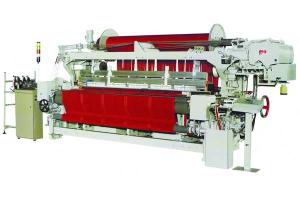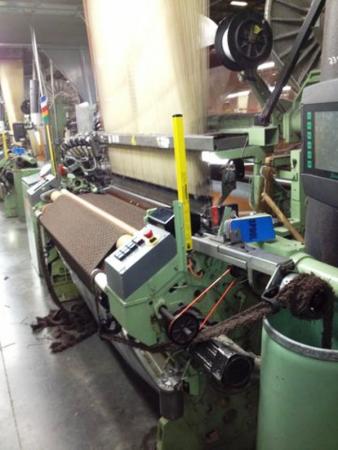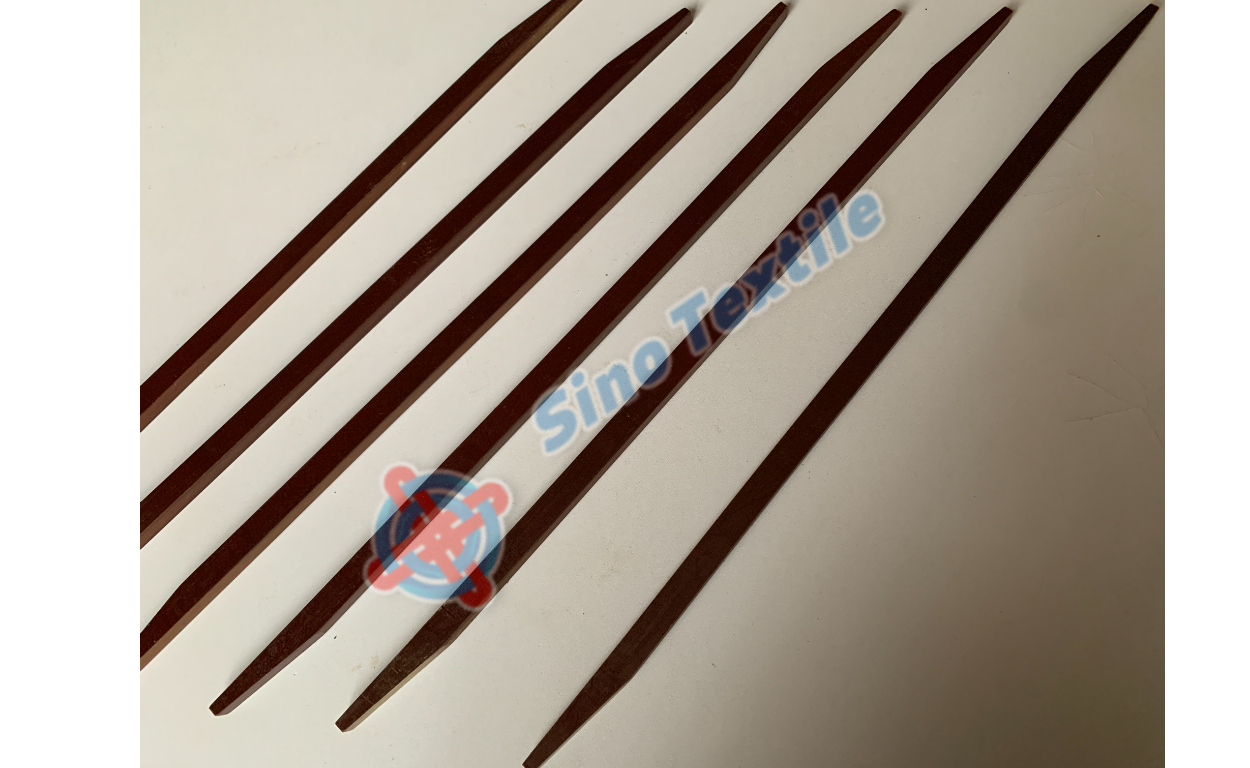How to Choose Weaving Heddle and Heald Frame For Air-jet Loom
1. Feature of Air-Jet Loom
a) The proportion of air-jet weaving machines is getting higher and higher, occupying 80% of total number shuttleless looms.
b) The speed of the air-jet loom is continuously increasing. The average running speed of 190cm width loom is 700-800r/min, maximum reaching 1100r/min, while in the 1990s lower than 600rpm.
c) Wide width air-jet looms are becoming more and more popular. 340cm and 360cm air-jet looms are widely used, some factories even use 380cm.
d) Variety adaptability is becoming wider. The sum of warp density and weft density has reached 144picks/cm.
All these have brought the forward higher requirement for weaving heddles and heald frames.
2. Heddle for Weaving
Six points need to consider while choosing weaving heddle: type of connection, simplex or duplex, total length X width X thickness, length X width of heddle eye, normal heddle eye, or special heddle eye, and heddle material.
2.1 Type of connection between heddles and heald frame
There are three types of connection between heddle and heald frame, O type (closed type), C type, and J type (open type). O type weaving heddles are mainly used in old shuttleless looms, and air-jet looms and water-jet looms with negative shedding; while C type heddles are mainly used in shuttleless looms with positive shedding.
2.2 Simplex and duplex heddle
In the weaving of coarse yarn, simplex heddles are used; and in the weaving of fine count yarn, duplex heddles are used.
2.3 Size and specification of weaving heddles
O type heddles heald loop distance mainly are 260mm, 280mm, 302mm, 330mm, etc; C type and J type heddles heald loop distance are mostly 280mm, 306mm, 331mm, 382mm, etc.
Width of heddle is normally 5.5mm, and thickness 0.3mm.
2.4 Size and specification of heddle eye
Heddle eye with length 5.5mm and width 1.2mm, are mostly used in weaving fine count yarn; while heddle eye with length 6.5mm and width 1.8mm, are mostly used in coarse count yarn; other special sizes are used in fewer occasions.
2.5 Heddles with special heddle eye
In previous weaving of high-density fabric with fine count yarn, normal duplex heddles are applied, but now duplex heddles cannot meet the technical requirements of increasing warp density. Heddles with the special eye are developed to meet the new demand, with a 32% increase of heald density over normal weaving heddle, and 1%~3% increase of weaving efficiency.
2.6 Material for heddles
The general material used in the production of weaving heddles are stainless steel, nickel-plated carbon steel, and galvanized carbon steel. Due to heavy pollution to the environment from electroplating, Groz-Beckert and Steel no longer manufacture carbon steel heddles.
3. Heald Frame
The requirement of the heald frame mainly refers to the width, the way of connection with the heddle, the way of connection with the shedding mechanism, cross beam height, corner joint, central support, etc.
3.1 Width of the heald frame
Width of the heald frame is consistent with loom reed width; however, the absolute width differs in different model weaving looms, different ways of connection with heddle. Same width heald frames from different loom models or with different ways of connection with heddle cannot reciprocate each other.
3.2 The way of connection with the heddle
Heald frames to be fitted with O type heddles have clamp, and with C type and J type not have a clamp. Heddle frames should match weaving heddles specifications.
3.3 The way of connection with the shedding mechanism
Heddle frame has various ways of connecting with shedding mechanism, listed below are the commonly used positive connection ways,

DRC1 or DRC10 are mainly used in Tsudakoma and Toyota from Japan; DRC2, DRC3, or DRC30 are mainly used in Picanol rapier and air-jet looms; DV is mainly used in rapier and air-jet from Somet and Smit.
3.4 Cross beam height
In the old days, in positive shedding mechanism, cross beam height of heddle frame is 120mm; as the loom speed increases, strengthened heddle frames have been released to the market, with a cross beam height exceeding 150mm. Here is theoretical weaving speed (loom width 190cm) while using heddle frames with different cross beam height;
b) Cross beam height is 140mm, maximum weaving speed 750rpm
c) Cross beam height is 150mm, maximum weaving speed 850rpm
The neglect of cross beam height influence to loom speed may result in loom working in a critical state, causing damage to cross beam and side stay.
3.5 Corner joint
The corner joints play an extremely important role as all force goes to four corners. Corner joints have two types, rigid connection, and flexible connection.

3.6 Center support in wide width heald frame
For weaving loom width 280cm, if cross beam height is 120mm, central support has to be installed; the same case if cross beam height is 140mm. If cross beam height is 150mm or more, central support is not necessary. When loom width is over 280cm, all al-alloy heddle frames should have central support. However, central support also brings problems--the operation is complicated; central support joints are easy to break; marks may appear on the fabric surface due to central support. The abandonment of central support also brings new headache—loom speed has to be reduced to prevent heald frame breakage; heald frame will deform and its working life shortened; heald frame deformation cause weaving heddle stagnancy on the heddle rod, affecting loom efficiency.
3.7 Full carbon heald frame and C-Al composite heald frame
The fundamental solution to the central support dilemma is to use the heald frame without central support, by using special manufacturing material.
The full-carbon heald frame can be driven by only two spots in the width of 400cm without central support. The price is almost 3 times of al-alloy one, and not widely used.
C-Al composite heald frame does not require central support at certain speed limitations. Price only 30% higher than that made from al-alloy. It's becoming popular in the market.
4. How to Choose Weaving Heddle and Heald Frame For Your Air-Jet Loom
The choose of weaving heddle mainly depends on loom shedding type, weaving species, etc. Most imported air-jet looms
are with positive shedding with open type heddles, which means J type or C type. J type and C type heddles have no
essential difference in application. The newly purchased weaving heddles should be the same current using one for ease of
management. In most circumstances duplex heddles with eyelet size 5.5mmx1.2mm are used; only in the weaving of coarse
count yarn, simplex heddles with eyelet size 6.5mmx1.8mm are chosen. The general length of heddle is 331mm, and if heald
frames quantity is more than 16 pieces, weavers can choose 382mm heddle. In the weaving of high-density fabric with fine
count yarns, it is advised to use special eyelet heddles if possible.
The choose of heald frame depends on weaving loom manufacturer, loom brand, speed, width, fabric species, etc. In air-jet
loom weaving, the heald frame must be reinforced type. In terms of high-speed weaving and wide width loom, the C-Al
composite heald frame should be considered.

 English
English  한국어
한국어  português
português  العربية
العربية  tiếng việt
tiếng việt  ไทย
ไทย  Malay
Malay  हिंदी
हिंदी  Indonesia
Indonesia  বাঙালি
বাঙালি  اردو
اردو 


